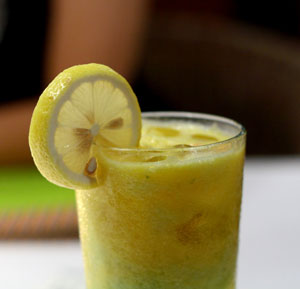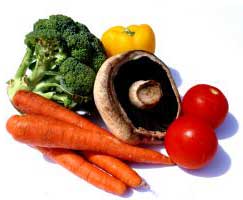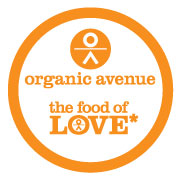 As the weather warms and more skin starts to show, the promise of quick weight-loss makes cleanse diets and liquid fasts all the more appealing. But can a cleanse really deliver other health benefits? Most cleanses promise to flush out built-up wastes, rid the body of toxins and promote weight loss. However, many cleanses go even further, claiming that they will help you think better, get sick less often, have more energy, suffer from fewer allergy symptoms and sleep better. Can drinking a special juice really deliver on such high promises? Here’s a run-down on some of the most popular cleanses, accompanied by expert health opinions.
As the weather warms and more skin starts to show, the promise of quick weight-loss makes cleanse diets and liquid fasts all the more appealing. But can a cleanse really deliver other health benefits? Most cleanses promise to flush out built-up wastes, rid the body of toxins and promote weight loss. However, many cleanses go even further, claiming that they will help you think better, get sick less often, have more energy, suffer from fewer allergy symptoms and sleep better. Can drinking a special juice really deliver on such high promises? Here’s a run-down on some of the most popular cleanses, accompanied by expert health opinions.
The Master Cleanse
Also known as the “maple syrup diet” or the “lemonade diet,” the Master Cleanse remains one of the most popular cleansing systems. It was created by alternative medical practitioner Stanley Burroughs in 1941, and consists of water, cayenne pepper, lemon juice and maple syrup, all mixed together into a kind of lemonade. Burroughs promoted the plan in his 1976 book, The Master Cleanser, but there are also a number of sites that detail how to best do the detox, plus different strategies of how to “ease in” and “ease out” of the cleanse. In the 1974 text, Burroughs recommends following this diet for a minimum of 10 days.
None of the medical professionals I asked about the Master Cleanse recommended it, although you probably won’t suffer from severe side effects if you do this cleanse for two or three days. “If a person tries to do it for a week to ten days, then it really puts a lot of stress on a person’s body,” says Dr. Jeffrey Morrison, who specializes in weight loss and detox diets. “What you’re avoiding is protein, and in my opinion as a medical doctor, it’s really important to have protein as part of a cleanse, because proteins are necessary in order to drive liver detoxification enzymes.” Some of the side effects of doing the Master Cleanse include lightheadedness, dizziness, fatigue and the potential of losing consciousness, all symptoms of malnutrition.
BluePrint
BluePrint offers several different juice cleanses, that come shipped right to your door in pretty, clear bottles with blue labels. The cleanses typically consist of two to four kind of juices, such as a “Green Juice,” a “Spicy Lemonade” that’s similar to the Master Cleanse juice and cashew milk. You can choose how long your cleanse will last and order juice for exactly that number of days. “Juice fasts, which also includes BluePrint, are best done in short periods,” explains Dr. Morrison, because they are so low in protein.
Dr. Lisa Davis, the Director of Research for Medifast, says that many juice diets are not nutritionally sound. “You risk your nutrients not being complete, in terms of your vitamins and minerals,” she says.
Like BluePrint, Organic Avenue offers a range of juice cleanses. All the juices are created under the principle of “L.O.V.E.,” which stands for Live Organic Vegan Experience. That’s why Organic Avenue’s product is often also called the Love Cleanse. Organic Avenue offers a much wider range of fasts and juices than BluePrint, and these can also be purchased individually. Some of the fasts also include raw foods, but these are typically only available in the New York City area. The juices are delivered fresh daily in glass bottles.
Organic Avenue’s cleanses seem to be somewhat more nutritionally complete because some include whole food and all have a wider number of ingredients. However, they are all still low in protein. The recommended duration of most of Organic Avenue’s cleanses are five days or less.
Izo Cleanze
Izo Cleanze offers two juice cleanses and a range of “superfood” supplements, which can also be used as a cleanse. Like BluePrint, you can decide how long your cleanse will last and order just enough juice for those days. The juice fasts also include vitamin supplements, teas and laxatives.
The Izo Cleanze faces the same health issues as BluePrint. It doesn’t seem very high in protein and is potentially too low in calories, plus all the supplements may interact with some prescription medications.
Clean
Clean by Dr. Alejandro Junger is a book that lays out a detox diet that includes regular meals of whole foods. The diet claims to “ease” digestion with mostly liquid nutrients, such as soups, smoothies, juices, and teas. It also includes one meal per day of lean protein (like fish or chicken) and some solid snacks, like nuts or seeds.
As the title suggests, this diet advocates for “clean eating,” or cutting out artificial preservatives, coloring, sweeteners in addition to processed sugar and flour.
Fat Flush
Like Clean, Fat Flush by Ann Louise Gittleman advocates for detoxification via “clean” eating. The “Fat Flush” itself is a diet that includes solid foods for all meals and snacks, and lasts for two weeks. In addition to these foods, you will drink a “Long Life Cocktail” which consists of cranberry juice, water, and psyllium or flaxseed. Cranberry water is also recommended three times throughout the day.
Dr. Morrison argues that detox diets that include protein are potentially much more sustainable for long-term weight loss. “Ann Louse Gittleman’s Fat Flush Plan or Alejandro Junger’s Clean program, those do include protein as part of their plan, so those make, in my opinion, more sense for long-term use,” he says. One of the major problems with juice diets is they lead first to the loss of water weight, and then to the loss of both muscle and fat.
Dr. Morrison has been researching a detox diet that’s comparable with Clean, and is laid out in his book Cleanse Your Body, Cleanse Your Mind. His plan uses a protein-rich rice-based shake as a meal replacement at lunch and breakfast, with lean protein for dinner and some fruit and veggies in between.
Detox vs. Clean Eating
 The whole subject of detoxification diets is on shaking ground when it comes to scientific and medical research. “There’s no evidence in the scientific literature that cleanse diets are effective,” says Dr. Davis, who does not recommend cleanse diets in general. Many doctors argue that the human body is perfectly capable of ridding itself of toxins, a function that proper nutrition is necessary to support.
The whole subject of detoxification diets is on shaking ground when it comes to scientific and medical research. “There’s no evidence in the scientific literature that cleanse diets are effective,” says Dr. Davis, who does not recommend cleanse diets in general. Many doctors argue that the human body is perfectly capable of ridding itself of toxins, a function that proper nutrition is necessary to support.
That said, the definitions of “detox diet” vary widely. On one end of the spectrum, the Master Cleanse eliminates almost all sources of calories, while at the other end a plan like the Fat Flush includes many types of foods that are supplemented with a juice. The Fat Flush plan is really not very different from a healthy, low-calorie diet, which indeed may have many health benefits regardless of whether or not they result in “detoxification.”
In patient outcome studies, Dr. Morrison found that his patients reported few headaches, better energy, fewer hormone-related problems and better digestion. “When we say this is a detox-diet, we’re basically eliminating all the foods that have toxins, preservatives or chemicals that might interfere with a person’s optimal health.”
The Bottom Line
Until we have any clinical evidence proving otherwise, it seems that most juice diets and all-liquid cleanses overstate their health benefits, while the side-effects are potentially severe. Anyone suffering from heart disease, anyone pregnant, nursing or under the age of 18 should not do a cleanse diet. It’s strongly recommended that anyone taking prescription drugs check with their doctor before starting a cleanse.
How can we account for all the anecdotal evidence that’s so frequently touted? “I think that there is a placebo effect that people do get,” says Dr. Davis. “You do in fact lose water weight when you go on a cleanse diet, and for some people that sense of evacuation allows you to feel better, so there is some benefit in that.”
One last word of caution from Dr. Davis: most liquid cleanses will kill off all of the bacteria in your intestines, both good and bad. If you choose to do a this type of cleanse, be sure it ends with a probiotic to restore healthy gut flora, which is important for digestion and aids immunity.

